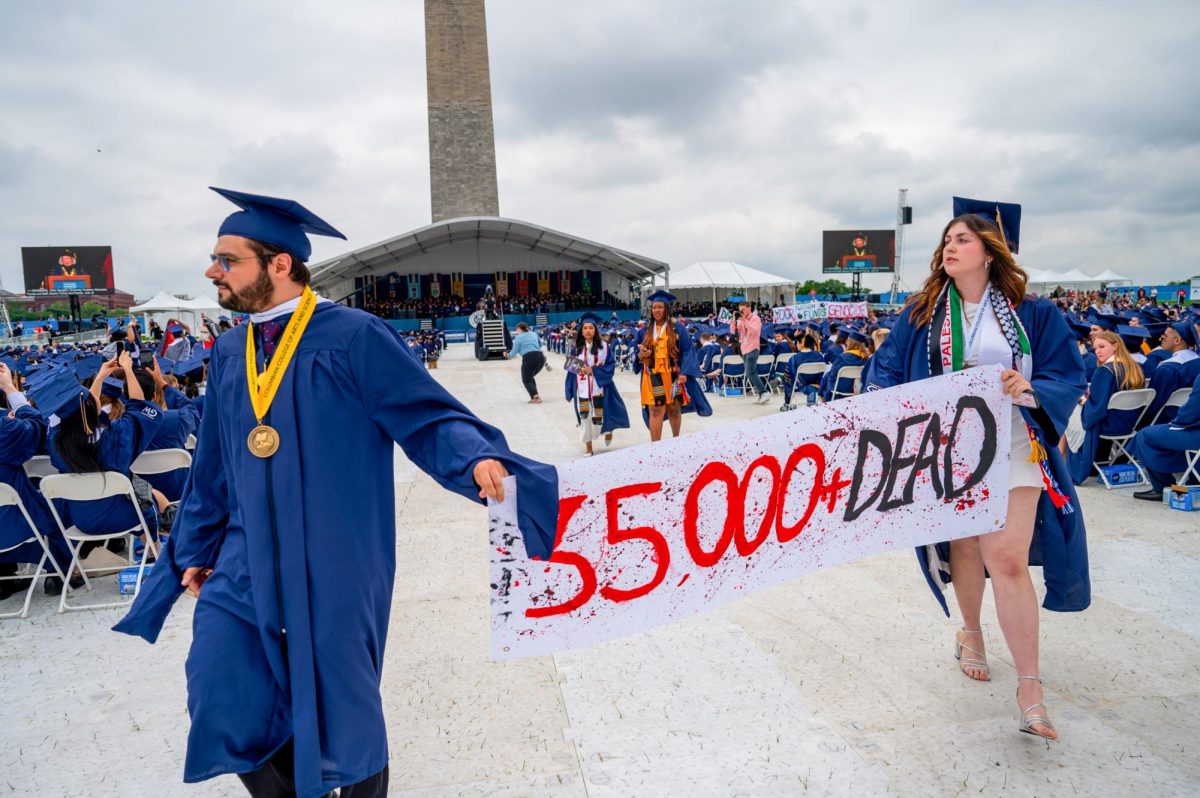The University plans to continue offering early decision admission to prospective students despite declining numbers of applicants and a national trend among top universities to discontinue use of this admission option.
GW’s number of early decision I applicants in 2007 dropped by 6 percent. The University received 1,009 applications for its binding November deadline in 2006 and only 946 applications in 2007. The number of students who applied using the early decision II option, one with a later deadline that is also binding, decreased by 15 percent.
The University also saw an increase in applicants for its regular decision deadline, from 17,924 in 2006 to 18,171 in 2007, a shift that indicates students who once would have applied early decision arenow more apt to choose GW’s regular decision option.
“We are . seeing a slight shift from early decision II to regular decision,” wrote Kathryn Napper, executive dean for undergraduate admissions, in an e-mail.
Choosing to apply early decision allows a student to receive an admissions decision from a college earlier than those who apply regular decision, but requires that the student sign a binding contract with the college. If accepted early decision to a given college, the student must withdraw his or her applications from other schools.
“I would suspect, given the current economic climate, that these students are taking a more conservative approach by applying regular decision,” Napper said. “This gives these students an opportunity to compare financial packages and more time to determine the outcome of outside scholarship opportunities.”
Considering GW has the highest tuition in the country, applying early decision could be an expensive, binding contract for prospective GW applicants. Lloyd Thacker, executive director of Education Conservancy, said GW’s cost could be a factor when considering the shift from early decision to regular decision, since GW’s declining number of early decision applicants does not fit the norm at other schools.
“I can say that early decision numbers at other schools seem to be holding stable,” Thacker said. “I would wonder to what extent cost is having an impact (at GW).”
Some colleges secure a certain amount of tuition money by offering students the option to apply early decision, Thacker said. Since students are bound by their early decision contract to attend the school, in many cases they pay full price.
“There are a disproportionate number of kids who apply early that are paying full price – upper, middle class kids,” Thacker said. “Colleges can secure a lot of money that way, so it’s a way for colleges to serve institutional interests.”
Colleges that have recently eliminated their early admissions options – such as Harvard University, Princeton University and University of Virginia – indicated that early decision programs disproportionably benefited affluent students, according to The New York Times. The Harvard dean of admissions and financial aid said abolishing its early admissions initiative encouraged more interest and more applicants, according to news reports.
Boston University, which advises most students against early decision, has a different philosophy on the benefits of regular decision.
BU spokesperson Colin Riley said the university prefers to make its admissions selections in the broad applicant pool of regular decision applicants to ensure diversity of achievement.
“We always saw it in our interest to do a regular applicant pool,” Riley said. “We can look at all the students.”
The early decision program at BU is very small and Riley estimated the University typically has 500 to 600 early decision applicants out of a total applicant pool of around 36,000. Students that apply early decision to BU are typically those applying to a specialized or selective program within the University.
For most students, Riley said applying regular decision benefits students and parents because it does not shut out any options like the binding contracts of early decision.
“We’d hope that when you had your acceptances you were able to sit down and look at them in a way that made sense,” Riley said. “What would your cost be four years from now? What would your achievement be relative to peers? What are your future plans? Not everything is set in stone. It’s making an informed decision. That’s why we encourage (applicants) to apply to the normal applicant pool.”






